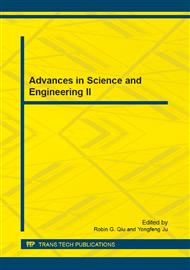[1]
J. van der Geer, J.A.J. Hanraads, R.A. Lupton, The art of writing a scientific article, J. Sci. Commun. 163 (2000) 51-59.
Google Scholar
[1]
T. Hattori, et. al., Hierarchical power distribution and power management scheme for a single chip mobile processor, Proc. Design Automation Conference, pp.292-295, (2006).
Google Scholar
[2]
V. De and et al, Technology and design challenges for low power and high performance, ISLPED, 1999, pp.163-168.
Google Scholar
[3]
Kaushik Roy, Saibal Mukhopadhyay, and Hamid Mahmoodi-Meimand, Leakage Current Mechanisms and Leakage Reduction Techniques in Deep-Submicrometer CMOS Circuits, Proceedings of the IEEE, vol. 91, no. 2, February (2003).
DOI: 10.1109/jproc.2002.808156
Google Scholar
[4]
R. Kumar and G. Hinton, A family of 45nm IA processors, " ISSCC, 09 Digest of Technical Papers, pp.58-59, Feb. (2009).
DOI: 10.1109/isscc.2009.4977306
Google Scholar
[5]
Kaijian Shi, David Howard, Challenges in Sleep Transistor Design and Implementation in Low-Power Designs, DAC, 2006, pp.97-102.
DOI: 10.1109/dac.2006.229187
Google Scholar
[6]
Z. Hu, et al, Microarchitectural techniques for power gating of execution units, " Proc. ISLPED, 04, pp.32-372004.
Google Scholar
[7]
S. Kim and et al., Understanding and minimizing ground bounce during mode transition of power-gating structures, ISLPED, Aug. (2003).
DOI: 10.1145/871506.871515
Google Scholar
[8]
Ehsan Pakbaznia, Farzan Fallah, and Massoud Pedram, Charge Recycling in MTCMOS Circuits: Concept and Analysis, DAC, (2006).
DOI: 10.1145/1146909.1146940
Google Scholar
[9]
Akira Tada, Hiromi Notani, and Masahiro Numa, A novel power gating scheme with charge recycling, IEICE Electronic Express, Vol. 3, No. 12, pp.281-286, (2006).
DOI: 10.1587/elex.3.281
Google Scholar
[10]
Stephan Henzler, Thomas Nirschl, Stylianos Skiathitis, Joerg Berthold, Juergen Fischer, Philip Teichmann, Florian Bauer, Georg Georgakos, and Doris Schmitt-Landsiedel, Sleep Transistor Circuits for Fine-Grained Power Switch-Off with Short Power-Down Times, ISSCC, (2005).
DOI: 10.1109/isscc.2005.1493989
Google Scholar


